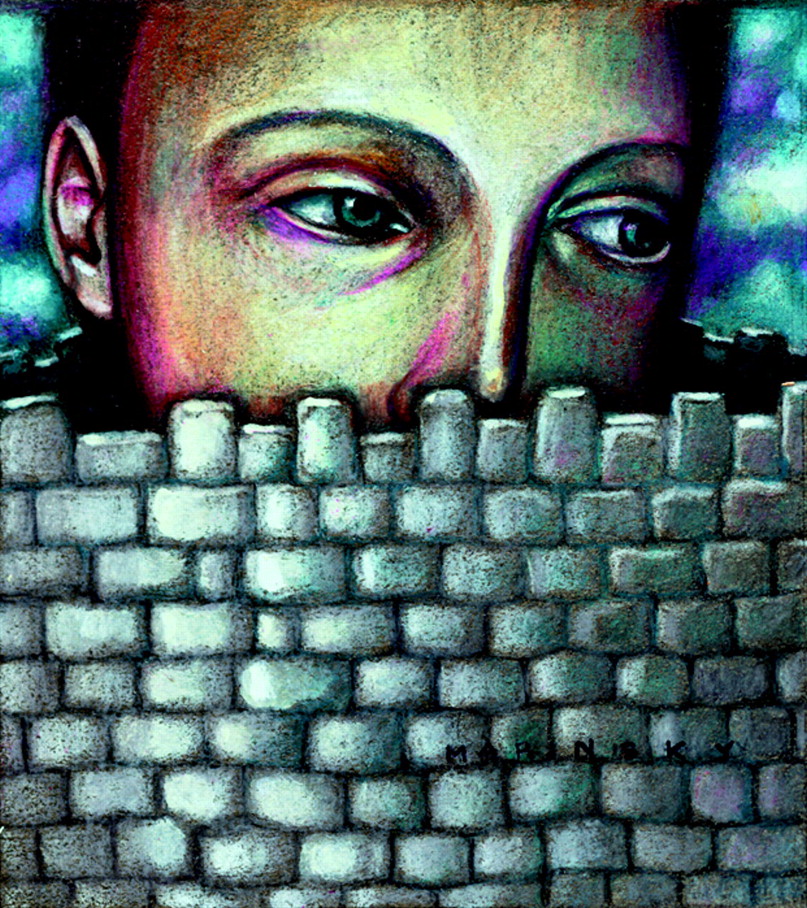It’s sad to watch a man walk into the room alive and leave dead,” but part of his job, J.B. noted, requires him to lead human beings to their death.
Unlike oncologists or other physicians who deal with death on a regular basis, however, J.B. has a job that few people are lining up for. He is a security officer assigned to death row at Louisiana’s Angola prison, infamous as the sinister setting for the award-winning film “Dead Man Walking.”
And several studies have shown that as a consequence of the job J.B. and his colleagues perform—making sure that there are no hitches as those “dead men” walk to their executions—they have likely become hardened and dehumanized. Or have they?
It turns out that J.B. and dozens of other staff assigned to Angola’s death row do not appear to fit that mold. In fact, they view themselves as professionals doing a job that society requires someone to do, and they take pride in the way they conduct themselves as they carry out the law.
While several researchers have documented the dehumanization that overtakes the staff who work on a prison’s death row, a teenaged researcher who has spent months interviewing all categories of staff at Angola has turned up a very different picture.
Michael Osofsky, a Stanford University sophomore from New Orleans, began journeying inside Angola’s forbidding barbed wire when he was a 16-year-old high school student who decided to do volunteer work at the prison. His interest in helping at the prison, he pointed out, was spurred by his father Howard’s involvement at Angola.
Howard Osofsky, M.D., is the prison’s senior mental health consultant, as well as chair of the psychiatry department at Louisiana State University School of Medicine in New Orleans.
During the last two years Michael Osofsky interviewed 50 death-row staffers ranging from the classification officers who process newly arriving inmates, to the guards, mental health personnel, and the emergency medical technicians who insert the IVs that will send three fatal drugs coursing through the condemned prisoner’s veins.
Osofsky described his findings at APA’s 2001 annual meeting in New Orleans in May in a presentation titled “Along the Death Trail: Inside the Mind of an Execution Team.” The session was chaired by his father.
He said he was interested in discovering how these individuals, most of whom work on death row by choice, cope with the psychological and moral stresses of “one of society’s most demanding jobs.” He conducted often hours-long interviews with the 50 staff (only two staffers declined to participate), including the prison’s warden, Burl Cain, and also administered a scale that assesses PTSD symptomatology known as the CAPS.
“My results challenge those of previous research,” Osofsky said, “which argued that security officers became ‘dehumanized’ or ‘strange’ after working on the death team for so many years.” One of his interviewees had spent 20 years working on death row. Many of the staff at the prison lived on the grounds, and the rest lived in the rural region surrounding the small town of Angola, where the prison is one of the only employment options. Many are the sons and daughters of prison staff.
Not Out for Revenge
One theme that ran prominently through all categories of staff, Osofsky emphasized, was that they did not see themselves as being on a mission or out to take part in society’s revenge against its most horrendous criminals. “They describe themselves instead as ‘soldiers of the court,’ ” who are responsible for carrying out what judges and juries have decided is just punishment.
In addition, they “place a high value on treating their charges as people,” not monsters, despite the horrific crimes that landed these inmates on death row, he said.
“The vast majority of staff are very religious,” he noted, and most of the “death team” takes advantage of a Christian prayer session that the warden holds about a half hour before each execution. Several of the officers admitted that their role in killing another person causes them considerable anxiety, Osofsky said, and many “convey a sense of guilt through concerns about their own salvation, and they look for redemption in teachings from scripture and words from their clergy.”
Among the categories of death-row staffers Osofsky interviewed, the officers get to know the condemned inmates better than anyone else in the prison, since they talk to them several times a day.
One such officer told Osofsky, “If anybody says executions don’t impact themselves, there’s something wrong with them.” He explained that he and his colleagues don’t downplay the inmates’ crimes, but that they come to see them as “people,” some of whom change considerably for the better during their time on death row. He noted that he never sleeps on the night after an execution and wonders how society will judge him and his coworkers in 500 years. He said as well that he has to believe that executions are serving as a deterrent to crime, but admitted that facts point to the contrary.
Staff who are present in the “death house,” the series of rooms where prisoners are executed, guard the building, are responsible for scrutinizing inmates’ last visitors, and escort the victim’s family to the separate room where they stay during the execution. One echoed what a number of his colleagues think about the events. “After it is over, you get to thinking about [the inmate]. You try to block out what happened, but you can’t—his death is there.” Another described how he looks forward to the gathering of the “death team” after the execution, where a huge amount of food is available, and they can decompress by talking about topics other than the execution.
‘Time to Move On’
“These officers,” Osofsky said, “noted that they stopped thinking about the execution when they left the prison gates. They had done their part, and it was time to move on.”
He suggested, however, that they do not “move on” to the extent they think they do. “A majority of the officers,” he pointed out, “seem to suppress their feelings and do not have any cathartic outlets for talk. Instead. . .members of the death team generally do not talk about the prison, and especially the execution process, once returning home, putting on their ‘tough-guy’ façade. They do not volunteer their feelings, and their spouses or partners rarely question them,” he learned.
Three of the mental health professionals who work with death-row inmates were also interviewed, and not surprisingly, Osofosky found that their education did not train them to deal with this unique population. “The goals of their profession—to improve and to instill a better quality of life in one’s clients—can’t be realized in a world in which their client is precariously skirting death,” he said. He quoted R.D., who explained his dilemma by noting he is in a helping profession, “but there isn’t a damn thing I can do for these guys. I hate it, but I do it. I am required to do it . . . . Even though they aren’t patients, it is difficult.”
One social worker described a process in which new counselors are “too compassionate” and end up being taken in by prisoners’ sad stories, which often turn out to be lies.
“Eventually, some workers realize that they have begun to tune out and literally do not hear parts of what is being told to them, especially around the time of an execution,” he said, “they find that such disassociation can be helpful.” He explained that he just tries to “provide humanity and dignity as they go” to their executions.
Then there is the strapdown team, a six-person group of senior officers who escort the condemned the 25 feet to the execution room and secure him to the table. Each is assigned responsibility for one body part, such as the left arm. The participants indicated that this practice prevents them from having to focus on what they’re preparing a human being for and diffuses responsibility. A worker who has been on strapdown teams for 15 years told Osofsky, “We each have a small role to play. . . .We have a duty to do it as efficiently as we can. The day is important enough that we want it to go without a hitch.”
The stresses they hide do, of course, become manifest in other areas of their lives, Osofsky said, noting that “there is an unusually high incidence of divorce among the execution team—about 75 percent compared with 50 percent for the rest of the U.S. population.” Many of the staff appear to find more of a familial feeling among their colleagues than at home, Osofsky noted. Seeking help from psychiatrists or mental health professionals is “rare,” he said, and they have no opportunity for “post-execution catharsis.”
So has what they witness and participate in affected their views of the death penalty? Osofsky noted that about 67 percent said they approved of it, 25 percent were opposed, and the remainder did not want to comment or said their job forced them to be impartial. As for Osofsky, he remains somewhat ambivalent about it, but said he is probably “slightly for it.”
In the future, he said in response to a question from the audience, he would like to develop programs that “will keep children from ever meeting the execution team.” ▪

